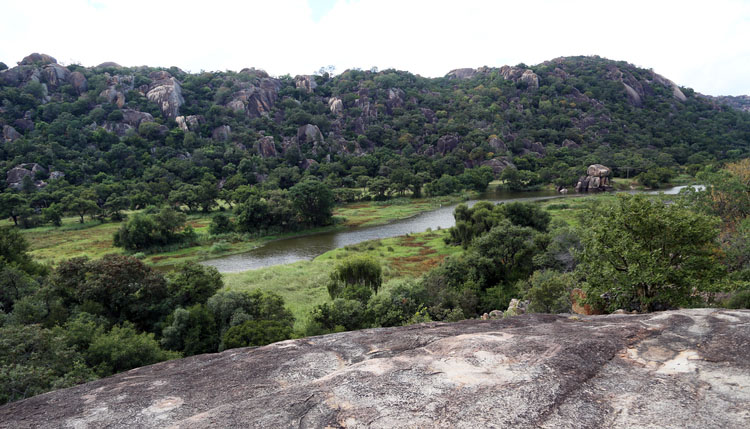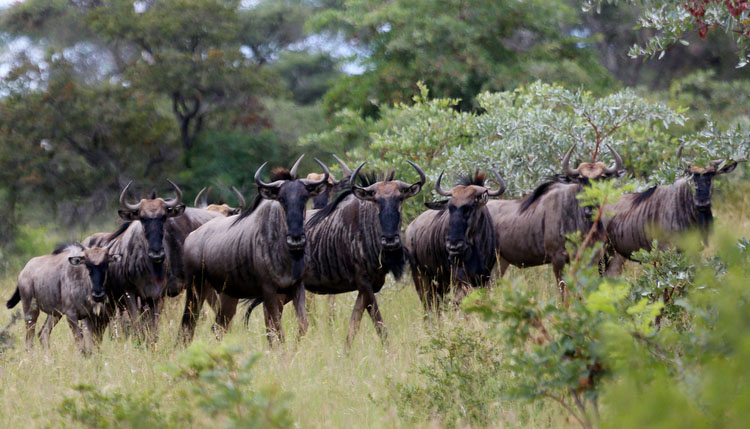
The Sunday Mail

On 26 March 1902, Cecil John Rhodes breathed his last. The body was taken by train from Cape Town to Bulawayo, whereupon it made its last trek by wagon to the Matopo Hills, where he was laid to rest, as had been noted in his will.
Just as David Livingstone had been mesmerised by the Mosi-a-Tunya half-a-century earlier, which he re-named Victoria Falls in honour of his then reigning queen, Rhodes could not, equally, resist the beauty of the Matopos, remarking when he reached the place where he would be buried years later, that this was “the world’s view”.
And ever since his burial, the usual temptation has been to attach Matopo Hills with Rhodes’ grave but in the past decade there have been new boys (and girls) in town to take over that popularity.
Driving southerly out of Bulawayo, probably some 30 kilometres out, a highly noticeable presence of granite outcrops emerges. For a first-time visitor the granite outcrops can be mesmerising, just as much as Rhodes was mesmerised, relegating the famous Epworth balancing rocks into some sensibly stable rock act.
It is within this rock outcrop that wild animals have wandered, unhindered, for centuries.
The mix has always been some zebra, wildebeest, leopard, kudu, bush buck and the rhino (black and white).
Then in the three decades succeeding the 1970s, with a growing international demand in the rhino horn — a key ingredient in Asian medicinal concoctions — there was an upsurge in the ruthless killing of the rhino, for its horn, so at one time the species stood on the threshold of extinction.
Whilst the animals numbered in its millions before the advent of colonialism, by the 70s a few thousand roamed only four countries in Africa: Zimbabwe, South Africa, Zambia and Kenya.
Enter Matopos, Rhodes’ resting place.
With the growing poaching in and around Zimbabwe, especially in the open Zambezi Escarpment where the rhino offered easy fodder for the poachers, a decision was made to translocate the remaining few rhinos to Matopos.
The last of the rhinos to leave the Zambezi was moved about two decades ago and what the Zambezi lost, Matopos gained.
Presently, Matopos has the highest concentration of the rhino species in the country, hence it has taken centre-stage in rhino conservation efforts.
 Attention please . . . Besides the rhino, there is plenty other wildlife to keep one busy at the game park
Attention please . . . Besides the rhino, there is plenty other wildlife to keep one busy at the game parkWhile Zimbabwe’s tourism appeal is such that besides viewing the Big Five, there is the added advantage of seeing the Seventh Wonder of the World, the mighty Victoria Falls as well as the mystic and confounding Great Zimbabwe — both rare attributes to Zimbabwe’s tourism package
Matopos comesinto the matrix as a must-stop destination as it is the only sanctuary where one can view the rhino in its undisturbed, natural habitat.
Which naturally leaves Emson Magodhi, the tourism manager at the Zimbabwe Parks and Wildlife Management Authority-run Maleme Lodges, purring: “We have the most rhinos here, such that those who want to come to Zimbabwe to have a sighting of the animal in its natural habitat are advised to come here.
“Our visitors are assured of an over 95 percent chance of seeing the rhino on our rhino walks.”
But that the rhino is now almost overtaking Rhodes, albeit in his comatose state, as the most popular attraction at Matopos has not been an overnight success, concedes Magodhi. Whilst the resort has suffered in the past decade or so from poor arrivals, which was mainly a perception issue around Zimbabwe, which Magodhi hopes will be solved by the re-engagement efforts currently ongoing, their other fight was against the poacher.
“When the rhinos were translocated here, the poachers followed, which meant we had to change the manner with which we looked after the animals.
“This has seen this park become an intensive protection zone, which means 24 /7 we will be looking after the rhinos. At any given time we are supposed to know where each animal will be.
“Naturally, this is a highly draining exercise, in terms of manpower and financial resources, but we have been managing, especially with the support of the Zimbabwe Republic Police’s Support Unit.”
Besides looking after the animals around the clock, Thembelani Sibanda, the acting area manager, said every two or three years, they ensure that the rhinos are de–horned.
“The rhino horn is just like your finger nails, which grow back once you cut them. So every second or third year, depending on financial resources, we de-horn the animals.” The robust round-the-clock conservation efforts at Matopos has seen the rhino population ballooning in the past decade.
But Matopos should not be defined in Rhodes’ eyes and rhino horns only, the place has much more to offer.
Especially an insight into early African civilisation, as the Nswatugi and Pomongwe Caves have some of the oldest rock paintings in Southern Africa.
The complexity of the ancient civilisation is such that when there were attempts to “preserve” some of the paintings at Pomongwe, using “ultra-modern” means, the paintings were erased.
Whereupon a decision was made to leave the other paintings in the state they are in.
And interestingly, at Nswatugi, there are a couple of shadow paintings, a rare form of rock painting.
The painting can only be visible when a shadow is cast upon it.
The rock paintings at Matopos, together with the great piece of art that is Great Zimbabwe, help to demystify the notion that civilisation came with the ship.
Then there are activities galore in and around Matopos. “As you notice we have a lot of rock outcroppings and hillocks, which naturally favours the outdoor person. Hiking, walk trails, fishing, picnics and bird viewing are some of the activities that those who want to stay here can indulge in,” explained Magodhi, adding that the Matopos is home to the black and fish eagle.





